HSC Chemistry 熱力學模擬軟體
- 專業化學計算
- 熱力學模擬工具
- 化學反應及平衡計算
HSC Chemistry 是受歡迎的通用流程模擬、熱化學軟體。HSC 設計用於各種化學反應和平衡的計算以及過程模擬。
HSC 軟體讓傳統熱力學計算速度更快,容易在電腦上進行計算。HSC 具有廣泛的科學教育、工業和研究應用。對開發新的化學過程和改進熱化學計算非常實用,因此,HSC 也是化工實習和研究大學有用的工具。
過去熱力學數據書籍和科學期刊上的論文的熱力學計算、實驗或數據評估已經利用了一些軟體功能。其他更困難的搜索階段和複雜的計算都使得該計算過程相當耗時。但 HSC 提供了在平衡研究化學系統上不同變量強大的計算方法。HSC 也使得不同工料熱量和物料平衡計算變得更容易許多。對 EH-pH 值圖表選項還提供了研究不同材料的溶解和腐蝕行為的方式。
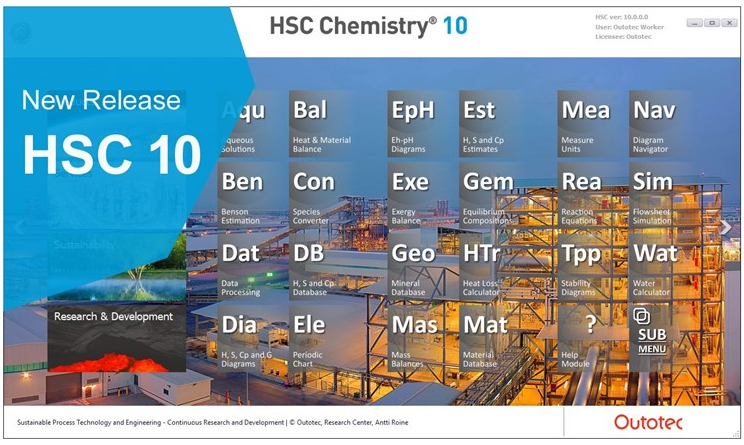
更新介紹
- HSC 9 calculation module files are upward compatible with the new HSC 10
- Sim Model Base expands personal expertise to organization expertise
- Sim Model Optimization with Monte-Carlo, PSO, Simplex, MFit (SQP)
- Sim Model Convergence Monitor for static models
- Sim Dynamic Report is a new tool for collecting simulation data
- Sim file loading and calculation speed improvements
- Sim Unit Operation Protection
- Sim model combination improvements
- Sim OpenLCA dialog improved and updated
- Sim new generic unit operations
- Gem Equilibrium Module: Own Pitzer parameters, electrode potential calculations
- Aqua Module with own Pitzer database
- New Sampler Module with save/open features
- Diagram Navigator Module: new triangulation algorithm and several small improvements
- Data Processing Module with new algorithms and faster graphics
- Material Database Module with links to location maps
- HSC Main Database Module with new and updated data for chemical species
- HSC Main Menu with Sub Menu
- Many minor improvements and bug fixes
每個元素都有自己獨特的特徵和屬性,決定了它在化學分子,物種和過程中的表現。奧圖泰HSC化學有助於您理解,控制和掌握化學過程中的這種行為。
HSC是首批結合了多種化學,熱力學和礦物加工功能的軟件包之一。例如,在開發新的化學過程和改進現有化學過程時,熱化學計算是有用的。由於該軟件使您能夠使用標準計算機進行快速簡便的計算,因此它具有廣泛的教育,工業和研究應用。
HSC還包含用於礦物加工和顆粒計算的模塊,這些模塊與廣泛的礦物數據庫集成。通過動態且完全可定制的菜單訪問模塊和數據庫。
最新的HSC Chemistry軟體包含24個連接到12個集成數據庫的計算模塊。
Sim - 流程圖模擬模塊
The Sim module is a versatile flowsheet simulation platform for many different types of process models. Users can easily create Excel- or DLL-type customizable unit operation (reactor) models and connect them using a flowsheet. The module can be used to create process models for hydrometallurgical and pyrometallurgical systems, as well as for minerals processing and physical recycling systems.
Unit operation models provide unique flexibility when creating process models. Scaling and pricing calculations, as well as other post-processing tasks, can be carried out using the built-in Excel emulator.
For environmental impact assessment, the Sim module combines process simulation functionality with the LCA functionality of third-party software such as GaBi. This provides a rigorous mass and energy balance as well as a techno-economic basis for LCA, and thus links environmental impact analysis to technology. The LCA tool makes it possible to optimize the whole process not only from the technical and economic point of view, but also from the perspective of its environmental impact.

新 :動態模擬
Dynamic simulation enables the users to carry out time-dependent process calculations. This allows more accurate modeling for various batch processes as well as studying the effects of process fluctuations and delays.
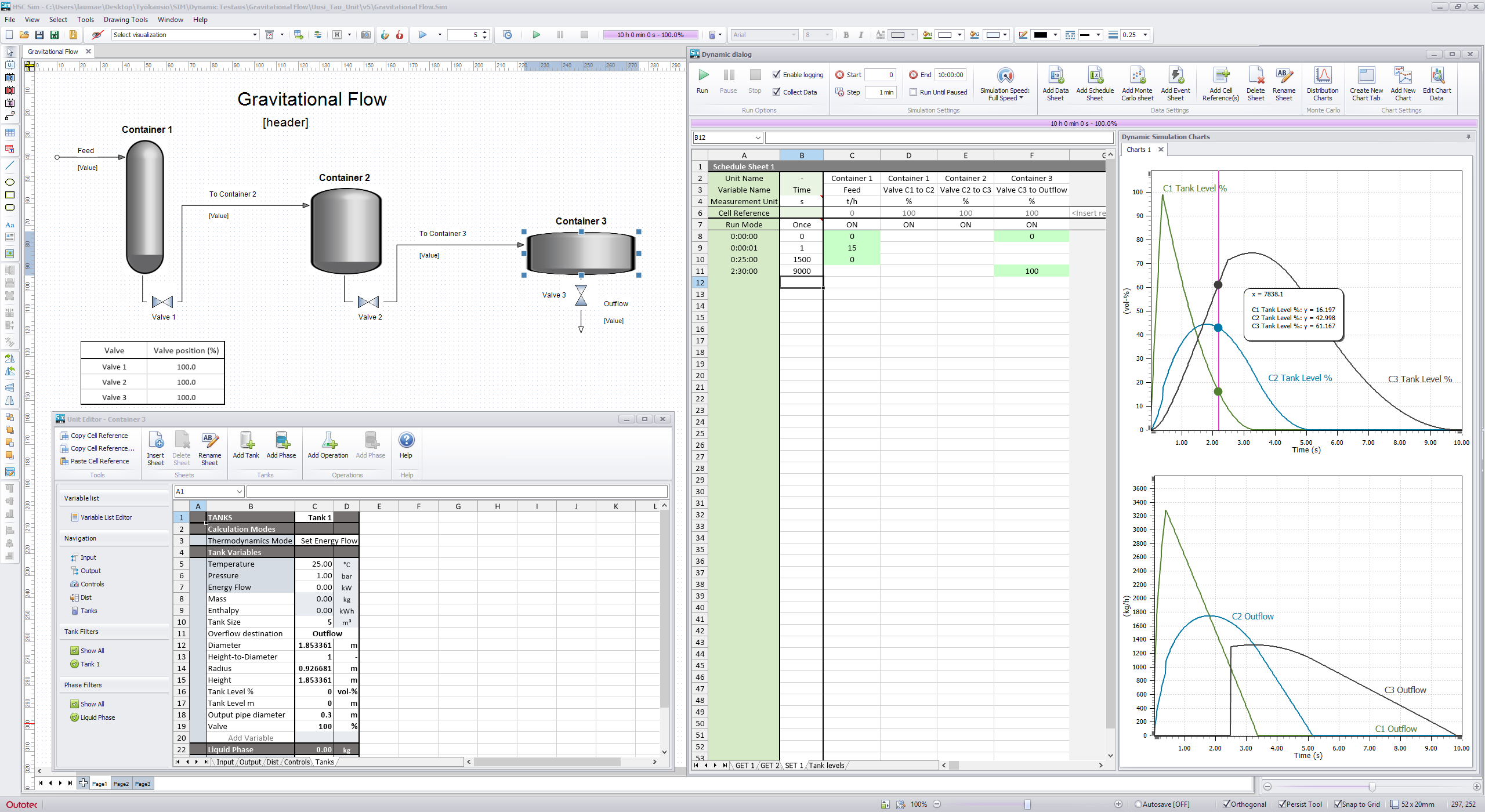
Excel加載項功能
With add-in functions, the HSC database and functions can be used in HSC’s built-in spreadsheet editors and in Microsoft Excel, making it possible to carry out thermochemical and mineralogical calculations in Excel spreadsheets. There are more than 100 different add-in functions available. In the Sim module these functions turn unit models into small “HSC engines”. For example, the StreamEQ function calculates the equilibrium composition for given raw materials and temperature. Similar HSC internal functions may be called from your own .NET applications.
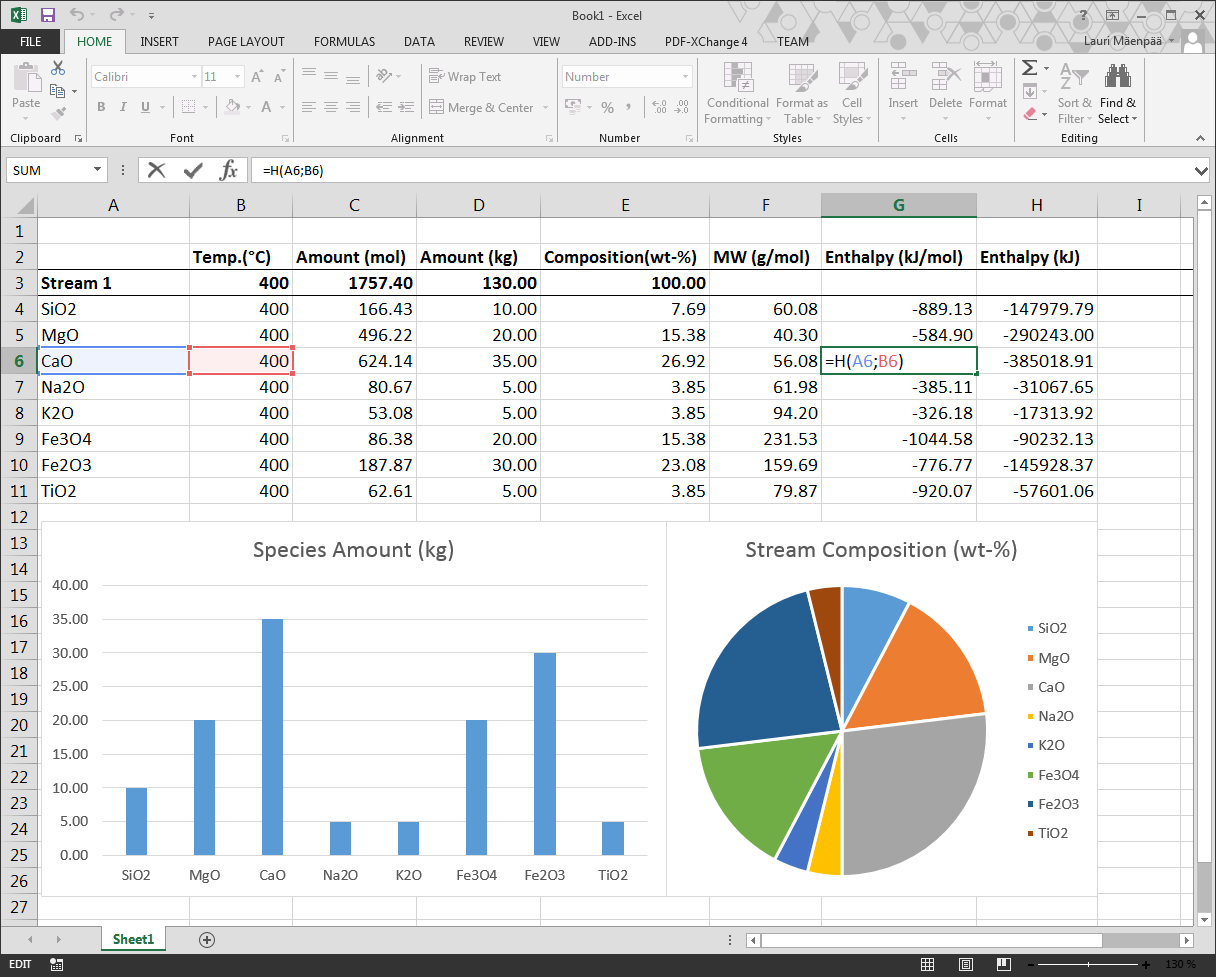
新:Sim Model Optimization
- New tool for model optimization.
- Direct optimization of any cell reference in Sim model.
- Four available algorithms: Monte-Carlo, PSO, Simplex, MFit (SQP).
新:Sim Model Convergence Monitor
- New tool to finalize steady state calculations when convergence criteria are met.
- Works for static models.
- Variables: Mass, heat, or both.
- An option is available to check the controls before completing the calculations.
Gem - Equilibrium Compositions Module
Gibbs equilibrium calculations are a practical way to investigate and study the effect of raw materials and process variables on the products of chemical reactors. This helps when estimating recovery levels, identifying opportunities to reduce the environmental footprint of the reactor, and setting the limits of sustainability before proceeding to the lab stage. The Gibbs Energy Minimization (GEM) method is used in the calculations.
Cell calculations have been integrated into the Equilibrium module. These calculations use the same GEM routine as the main equilibrium module, making it possible to calculate the phase compositions and cell voltages of electrochemical cells and plot 2D and 3D charts in electrochemical systems with the discharge level on the x-axis.
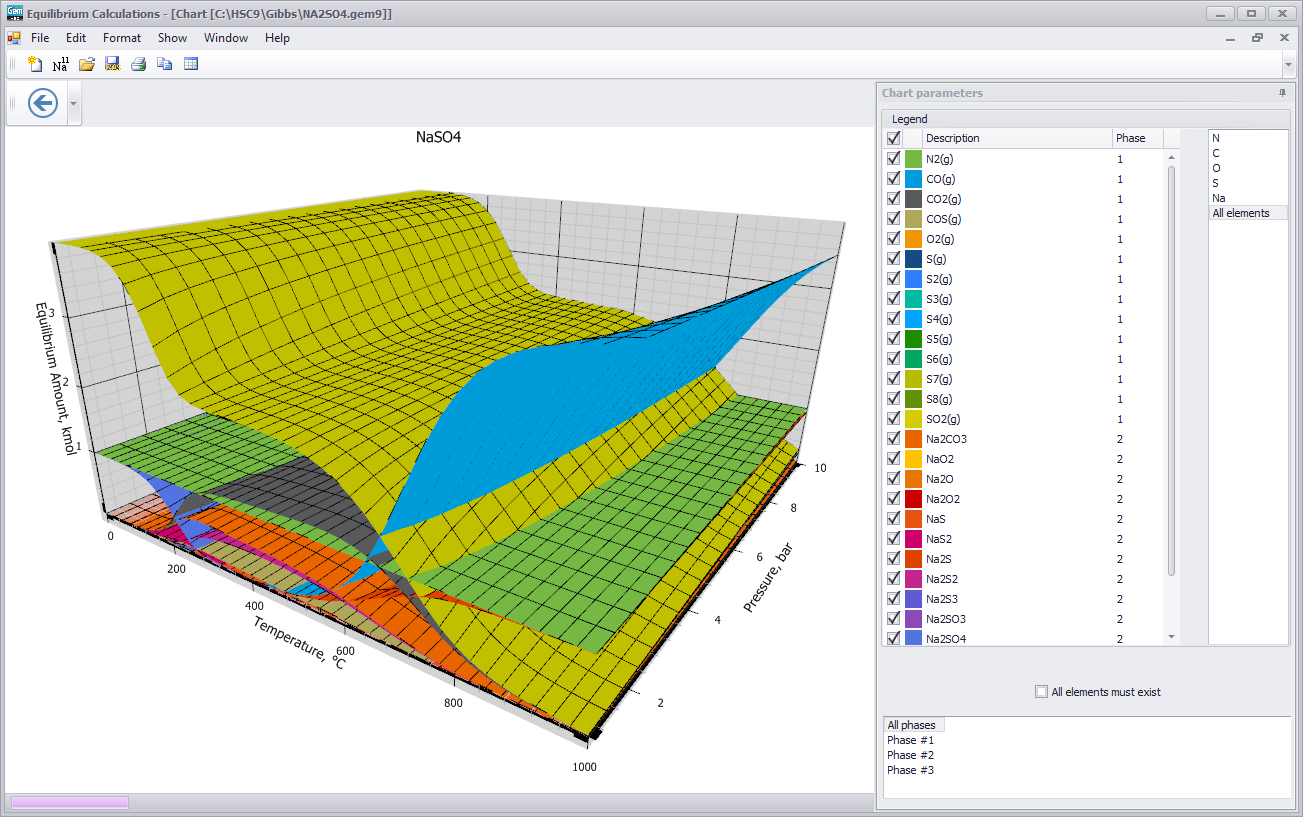
HSC熱化學數據庫
Basic thermochemical H, S and Cp data is available in the HSC Chemistry database for more than 28 000 of the most common species used in chemical industry. The enthalpy (H), entropy (S) and heat capacity (Cp) values of the elements and compounds are saved in the database together with a variety of additional information. Since the number of different chemical compounds is infinite, HSC enables you to save your own species into the HSC database to be used across all calculation modules.
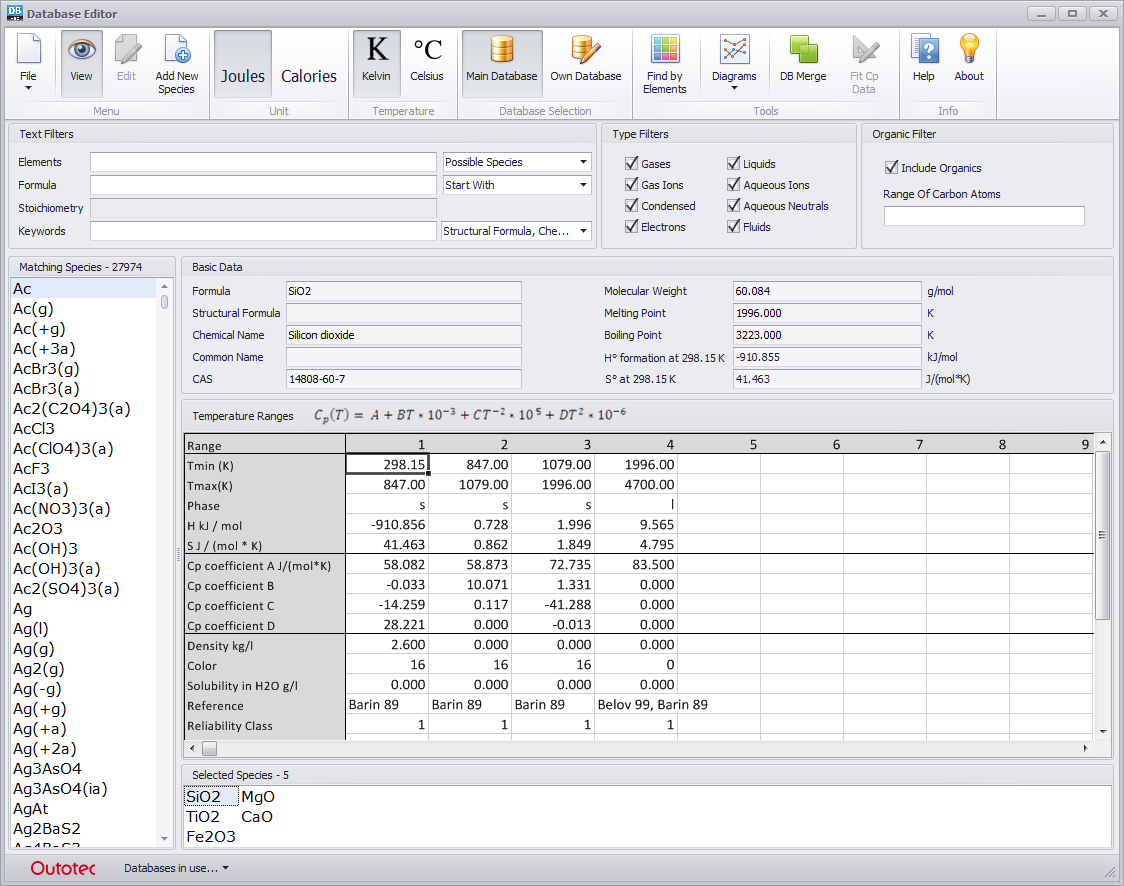
Other HSC Chemistry Modules
- Material Database Module
- Reaction Equations Module
- Heat and Material Balances Module
- Mineral Database Module
- Heat Loss Module
- Stability Diagrams Module
- Eh-pH Diagrams Module
- H, S, Cp, G Diagrams Module
- H, S Cp Estimation Module
- Benson Estimation Module
- Mass Balance Module
- Water Module
- Aqueous Solutions Module
- Measurement Units Module
- Periodic Chart Module
- Species Converter Module
- Exergy Balance Module
New HSC License Types
Basic License is good for personal laptops and workstations and other local Machines.
Floating License is good for personal laptops and workstations and other local machines, if only very few out of many users are using HSC simultaneously. Installation is made on the local devices.
Server License gives the flexibility of using HSC via remote connection by several end users. HSC updates are also easy to carry out, because installations are carried out on one server. However, a lot of calculation capacity and fast network access are needed if several end users are using HSC on the same server. The Server License will be released in Q1/2016.
Virtual Device License gives the flexibility of running HSC on a virtual device. This, for example, makes it possible to run HSC on an Apple machine if Boot Camp multi boot utility is not available. The Virtual Device License will be released in Q1/2016.
System Requirements
The system requirements for HSC are very typical of all Windows programs:
MS Windows: 7, 8 or 10 (64 bit)
Memory: 6 GB or more
Hard disk space: 4 GB or more
Display: Full HD
Other: Mouse recommended
Note: We reserve the right to change our product's specifications and prices at any time
without further notice.

